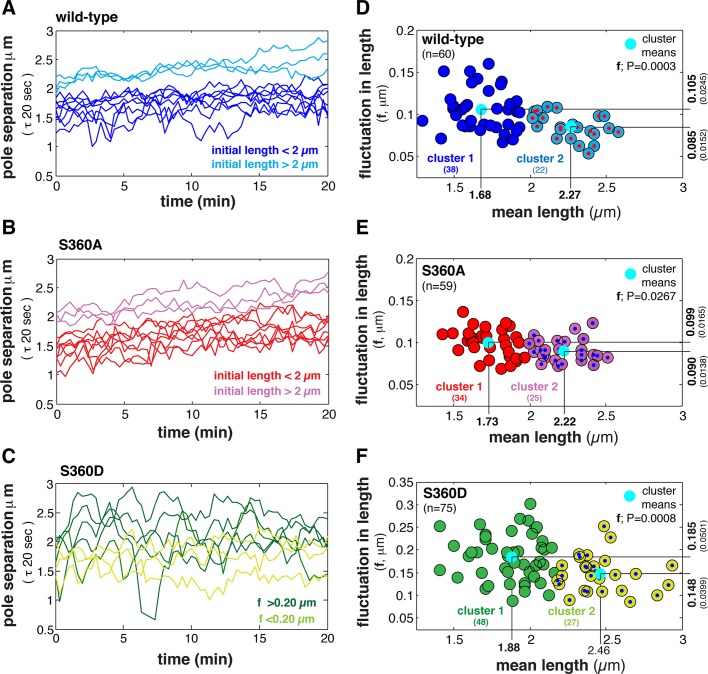FIGURE 7:
Inhibiting S360 phosphorylation dampens fluctuations during early steps in spindle assembly. (A–C) Length dynamics of individual representative wild-type, γ-tubS360A, and γ-tubS360D spindles: blue and light blue (A), red and purple (B), and green and light green (C), respectively. Tracks represent spindles with initial length <2 or ≥2 μm, respectively. (D–F) Analysis of length fluctuations and their relationship to spindle length in wild-type (n = 60, blue), γ-tubS360A (n = 59, red), and γ-tubS360D (n = 75, green) cells. The mean fluctuation in length (<f>, in micrometers) is plotted as a function of the mean spindle length (<L>), using data collected over 20 min at a time step of 20 s. Spindles could be clustered using K-means into two populations based on the amplitude of length fluctuations (cluster 1, large; cluster 2, small), with a transition length of ∼1.9 μm for the wild-type (D) and γ-tubS360A (E) populations. Length fluctuations of wild-type cluster 1 spindles (<2 μm in length) are larger than fluctuations in γ-tubS360D cluster 1 spindles (F-test, p < 0.05). (F) Length fluctuations in the γ-tubS360D spindle population were larger relative to all preanaphase wild-type spindles (F-test, p < 0.01) but decrease in amplitude as spindle length increases.

